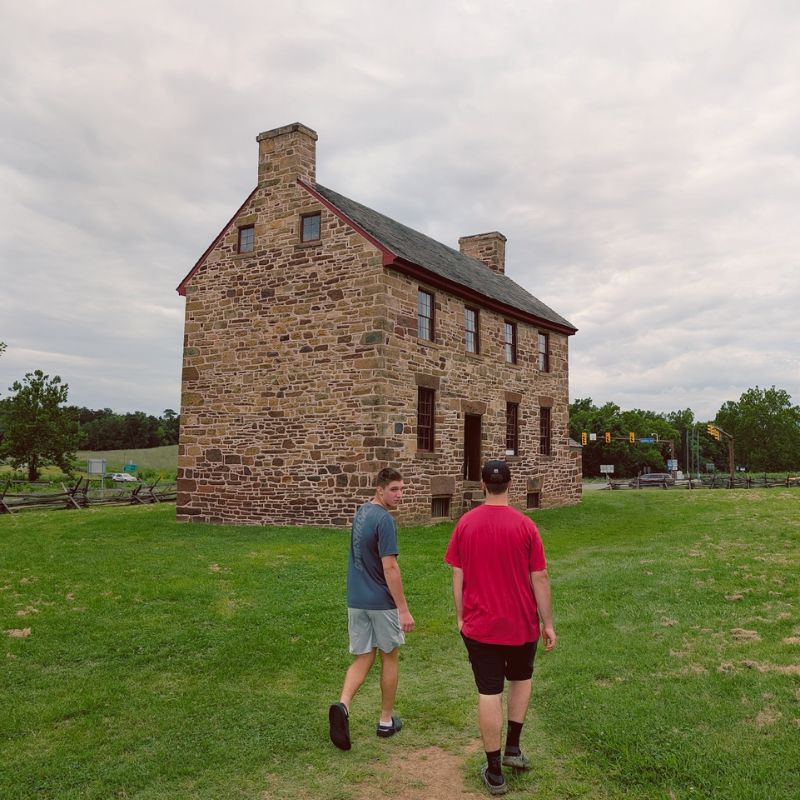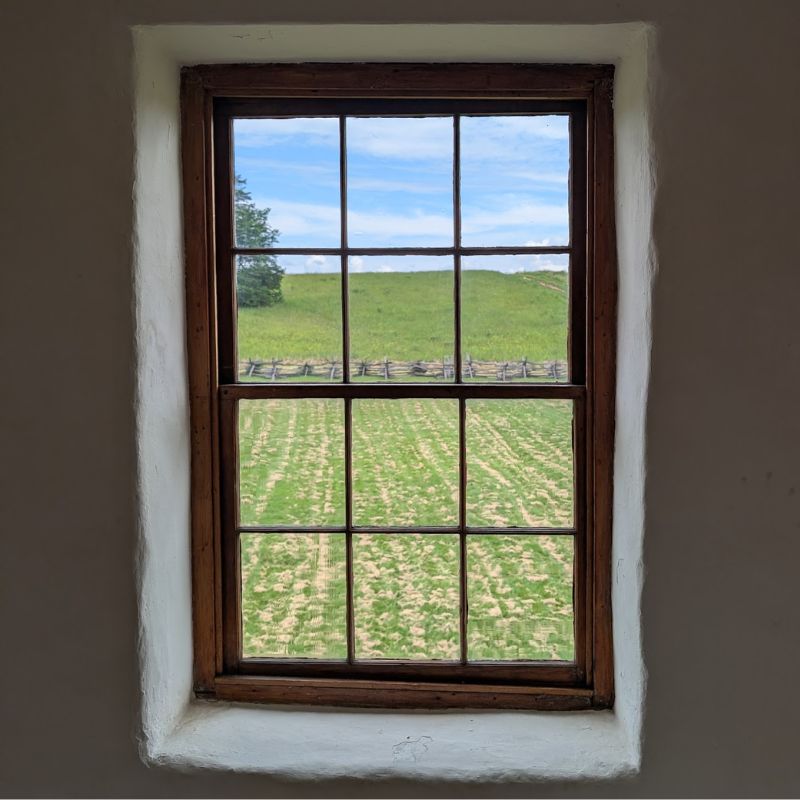Most of the time, history is hidden in old dusty books (or internet archives) or locked away behind glass cases in a museum. Our experience at the Battlefield at Manassas was different. History walked right up to us in the form of an older gentleman who happened to be a tour guide. We pulled in on July 21st… not realizing it was the exact anniversary of the Civil War’s first major battle. Talk about timing.
We had no idea. We were just traveling during our summer vacation from one destination to another, and this battlefield happened to be on the way. We figured it was a good spot to stretch our legs and kill some time. Instead, we stumbled right into a full anniversary weekend.
The Manassas National Battlefield Park had pulled out all the stops: live guides, a short film, and the kind of atmosphere that makes you look around and think, “Wow… something big happened here.” We thought we were just going to walk around some old battlefields and maybe poke our heads into a building or two. We got so much more.
The Stone House: Airbnb for the Wounded
Without a plan whatsoever, the first stop we came to was The Stone House (as they call it). We didn’t even know if we’d be able to go inside, but we parked the car anyway and got out to walk around.
As we approached the house, we could see that the door facing Buck Hill was wide open. We walked inside and were greeted by the friendly tour guide, eager to share historical facts about The Stone House along with other Civil War tidbits.

We learned that The Stone House was used as a sort of refuge for the wounded soldiers… a makeshift hospital, if you will. And as it turns out, soldiers during that time could not book a stay with a smartphone app. Being inside was a little bit surreal, knowing about the pain, the suffering, and even the death that soldiers endured within those walls.
I thought it was neat to peer out the upstairs windows and imagine what it must have been like during the battles. You could see the hills where some of the fighting took place, just a few hundred yards away. Below is a picture I took from inside one of the upstairs rooms, looking out toward Buck Hill. My photo almost looks like a painting… but that’s exactly what it looked like the day we visited.

I asked our tour guide if The Stone House had ever been shot at. He confirmed that it had taken plenty of gunfire but had never endured cannon fire. In addition to everything we learned about the house, our tour guide gave us directions to the visitor center and told us about the special anniversary events happening for just a few days.
The Visitor Center on Henry Hill
We drove the short distance from The Stone House to the visitor center, located on Henry Hill – a pivotal location during the first Battle at Manassas. Inside was a small museum with Civil War artifacts like weapons, tools, clothing, and photos. There was also a small theater, and we were just in time for the next showing.
We watched a full film with Civil War re-enactments. The movie is what made the entire experience all too real for us. It was well produced, and it amplified the eerie feeling we felt when we walked outside and realized that much of what we saw on screen had happened on the very ground we were standing on.
When the War Was Supposed to Be Over in Time for Supper
A few things stood out to me from the movie. First and foremost was how naive both sides were. The North (The Union), led by Abraham Lincoln, thought they could fight through the inexperienced opposition and capture Richmond, VA. The South (The Confederates) was confident in its ability to defend its territory from Union attacks.
Troops and leaders on both sides thought the battle they were heading into at Manassas would be the first, the last, and the only battle. Both sides were so confident they would win in one day and be home in time for supper. That’s absurd optimism. Kind of like a 58-year-old Mike Tyson thinking he could stand a chance against a 27-year-old Jake Paul in a boxing match.
When Your Picnic Blanket is a Front Row Seat to War
The naivete wasn’t limited to the soldiers. Civilians from nearby areas – many with loved ones in the army – were equally optimistic. So much so that they literally packed picnic lunches and headed to hills overlooking the battlefield to watch the fighting.
They packed lunch, grabbed the kids, and set up for the afternoon – because nothing says “family outing” like a live musket show. It’s sort of like a modern-day tailgate, except instead of watching a competitive football game, you’re watching men ruthlessly kill each other.
One other fact from the movie stuck with me: The first Battle at Manassas was fought on a Sunday. Washington D.C. is about 30 miles from the battlefield, and when people in the city were leaving their morning church services, they heard the distant cannon fire and thought it was thunder.
Lining Up to Die – Military Tactics of the Day
Knowing what we know today, and with the benefit of hindsight, the military tactics used during the Civil War are utterly absurd.
For starters, both sides wore bright uniforms… like toy soldiers in a Nutcracker. No camouflage, no cover, no sense. Might as well have sewn dartboard bullseyes on their chests.
Here’s how a typical Civil War battle worked: each side would line up across from each other on opposite ends of a field or hill and shoot. No shields, no real defense… just stand there in the open and fire away.
The closest modern-day comparison I can think of? Maybe two opposing football teams agreeing to stand still on opposite ends of the field and throw balls at each other until someone falls down. Still pretty stupid.
Leaving the Past in the Past (Sort Of)
As we departed the famous battlefield at Manassas and continued on our family vacation, I reflected on how far we’ve come as a country. The North and the South were bitter enemies during that time – to the point they believed it was necessary to kill fellow American citizens. Thank God we’ve left that mentality way in the past.
One line from Jesus came to mind: “Forgive others, not because they deserve it, but so you can be free.” If that kind of forgiveness could eventually grow out of something as bloody as the Civil War, maybe there’s hope for the petty grudges we nurse today. The stuff we face in the 21st century doesn’t even compare to what soldiers and their families faced in the 1860s.
Have you ever visited a historic site that hit you harder than you expected… where the past suddenly felt uncomfortably close to the present?